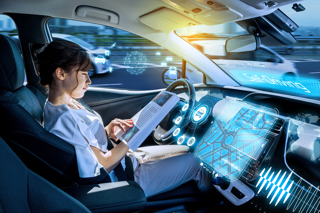Driving Simulators could be the key to stopping motion sickness in new cars, according to Ansible Motion.
The UK based company has been developing driving simulator technology to assist car manufacturers with the development of new models.
The importance of solving the issue of motion sickness has become all the more apparent as autonomous vehicles become more popular and people are increasing reading ore using electronic devices in the car.
Motion sickness is caused when the images we see fall out of sync with the movement we feel. It’s why, say, reading a book or watching a video while a passenger in a car can make us feel queasy - as there is a disconnect between what we’re looking at and the feeling of the road bumping beneath the seat and trees zipping by in our peripheral vision.
Ansible Motion’s driving simulator enables designers to test different components and conditions entirely virtually - changing things like the shape of the windows, the vibrations from different road surfaces, sound levels and the car’s suspension.
By swapping these components around virtually, designers can see what combination gives the smoothest ride. This means that when the first physical prototypes are created they are already designed to mitigate motion sickness.
The value of a driving simulator in the design process then is this: Being able to switch out and test individual components in thousands of different scenarios, with real people behind the wheel, without needing to actually build a car to start with. In fact, without the simulator it may soon be impossible to design a modern car without going to utterly enormous expense.


















Login to comment
Comments
No comments have been made yet.